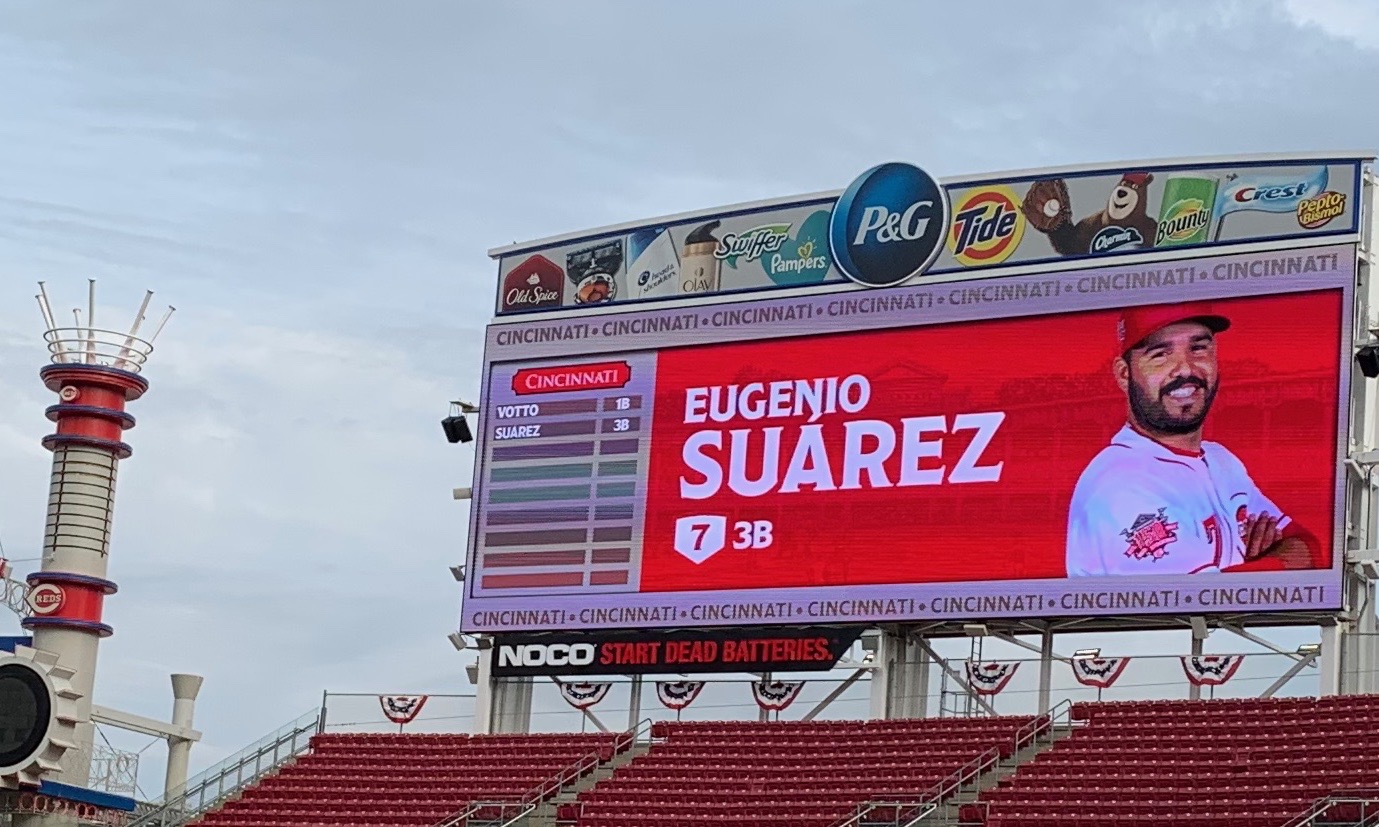
In 2018, Eugenio Suarez was arguably the Reds best hitter. He led the team in OPS, wRC+, and home runs. In spite of a below-average K%, he posted a strong OBP of .366 while hitting for gobs of power (.243 ISO). Suarez seemingly blossomed into the hitter we hoped he would be at his peak.
But, hitting is hard and thus far, this season has been a step back. Suarez has essentially been a league average hitter who, while hitting for plenty of power and performing high-quality salsa dances, has struggled to consistently get on base. Suarez’s decline has contributed to a Reds offense that still ranks 25th in runs scored.
Where has his decline come from?
As in most complex situations, it’s a combination of things. On the surface, it’s easy to see that Suarez is striking out more than he ever has and possesses the worst BABIP of his career. To understand why, we need to look at the details.
Plate Discipline
The basics of plate discipline are simple: swing at good pitches in the zone and avoid those you can’t handle. Suarez made the most contact of his career in 2018 by being aggressive in the zone and laying off pitches out of it. In 2019, he hasn’t been quite as good.

These numbers are just a little off. Suarez has swung at a few more pitches, chasing additional balls out of the zone. As a result, he’s making less contact. He has always had too many strikeouts, numbers that were on the verge of causing real problems. The minor changes in plate discipline numbers have led to a poor strikeout percentage and fewer walks.
Suarez has been especially susceptible to breaking balls and off-speed pitches. He’s seeing a higher percentage of both this season and fewer fastballs than ever before. In part, that’s because he’s swinging and missing at breaking pitches almost 5% more than he did last year. But when Suarez does make contact against breaking or off-speed pitches, he’s also not hitting the ball as hard.
Quality of Contact
We all know it’s better to hit the ball hard than soft. It’s true that a hard-hit ball sometimes goes for an out, and a softly hit one will at times end up as a hit, but over the course of the season, the guys who hit the ball harder will fair better than those who don’t. Suarez’s quality of contact has decreased since his breakout last year.

The MLB average for hard hit% is around 34%, so Suarez still ranks well in that category, but he has traded some quality contact for soft contact. His exit velocity on fastballs is down a bit, but it’s down 4 MPH on breaking pitches. Again, pitchers are throwing more breaking balls, knowing that Suarez isn’t doing as much damage on them. His expected slugging percentage (xSLG) on breaking balls has dropped from an impressive .518 to a Billy Hamiltonish .288. On off-speed pitches, his xSLG has dropped over .200 points.
Overall, Suarez’s xSLG is down to .408 from .517, and his xBA is now .228. In short, he’s just not hitting the ball with as much authority. That’s not the end of the story though. Suarez’s batted ball profile is also concerning.
Batted Ball
The launch angle revolution is built on the fact that line drives and fly balls do a lot more damage than ground balls. While ground balls go for base hits more often than fly balls, the rarely go for extra-base hits. Thus far, Suarez has traded line drives and fly balls for grounders.

The decline in line drives has led to his worst BABIP: .283, well below his career mark of .314 and even further behind 2018’s .322. When he hits fly balls, far more of them don’t leave the infield. Infield fly balls are … not ideal.
Again, we see a problem with non-fastballs. Suarez’s launch angle has decreased by 4 degrees since last season on breaking pitches and 5 degrees on off-speed stuff, which is a big reason he’s hitting more ground balls. Suarez isn’t exactly fleet of foot, so those grounders turn into outs quite often.
Conclusion
Eugenio Suarez is striking out more, but the biggest problem with Suarez’s season has been his failure to do damage against breaking balls and off-speed pitches. His xwOBA against breaking balls is a paltry .234. Against off-speed pitches, it’s not much better (.246).
Pitchers have figured this out and are throwing Suarez fewer fastballs. Until he makes them pay, he will continue to see plenty of soft stuff. Suarez has shown the ability to hit breaking and off-speed pitches with authority, especially last season. If the Reds offense is going to take a step forward, they need him to recapture his stroke against such pitches. At 27, there’s no reason to suggest he can’t.


